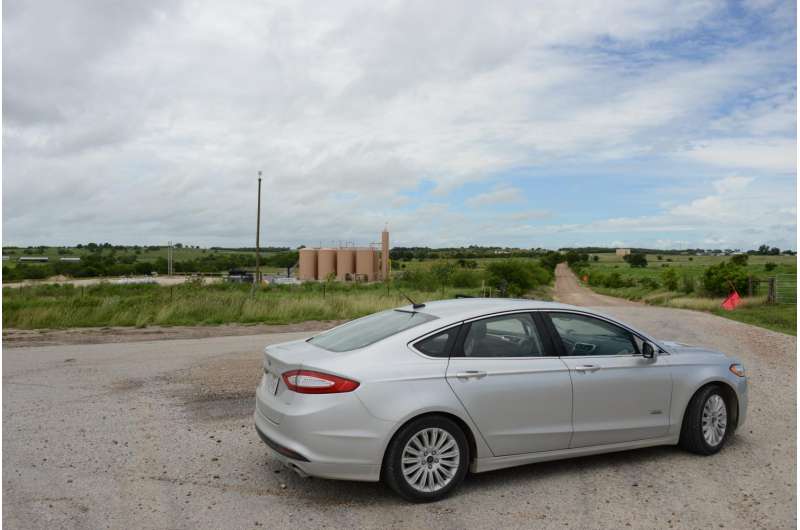Study finds air contamination near fracking sites result of operational inefficiencies

Chemists at the University of Texas at Arlington have published a new study that indicates that highly variable contamination events registered in and around unconventional oil and gas developments are the result of operational inefficiencies and not inherent to the extraction process itself.
The study, published today as "Point source attribution of ambient contamination events near unconventional oil and gas development" in Science of the Total Environment, found highly variable levels of ambient BTEX, or benzene, toluene, ethyl benzene, and xylene compounds, in and around fracking gas drilling sites in the Eagle Ford shale region in South Texas. BTEX compounds in high concentrations can be carcinogenic and have harmful effects on the nervous system.
"These variable contamination events, attributable in many cases to specific natural gas flaring units, condensation tanks, compressor units and hydrogen sulfide scavengers, indicate that mechanical inefficiencies, and not the inherent nature of the extraction process as a whole, result in the release of these compounds into the environment," said Kevin Schug, UTA Shimadzu Distinguished Professor of Analytical Chemistry and director of the University's Collaborative Laboratories for Environmental Analysis and Remediation, or CLEAR lab.
"These results therefore suggest that air contamination events from fracking can be monitored, controlled and reduced," Schug said. "We hope that this research would help producers and other upstream operators improve the efficiency and reduce the environmental impact of unconventional drilling."
The researchers made sampling excursions in the Eagle Ford shale region in June and November of 2015. They used a mobile mass spectrometry system, in collaboration with Professor Guido Verbeck of the University of North Texas, that allowed the team to identify individual points of contamination. The field study was coordinated by Dr. Zacariah Hildenbrand of Inform Environmental, LLC and affiliate of the CLEAR lab. All data were collected in a blind fashion, and samplers were guided by third-party local landowners with extensive knowledge of the local roadways. Collectively, 12,821 data points were taken.
Individual extraction sites with producing unconventional drilling wells were examined in accordance to the rights afforded to the mineral rights lessors. Anecdotal cases of contamination where air quality was considered downgraded were also analyzed with full consent of the participating landowners.
"We found that ambient BTEX compound emissions in and around fracking sites are within the federally mandated acceptable limits for short-term exposure," Schug said. "Our future research will focus on the long-term effects of sporadic contamination on citizens living in impacted areas. Monitoring of ambient BTEX in conjunction with review of medical records, in collaboration with local healthcare officials, will provide greater insight into the long-term human health implications of unconventional drilling air contamination events."
Previous studies from the CLEAR Lab have focused on groundwater quality associated with unconventional drilling. CLEAR is dedicated to the development of remediation technologies and best management practices to effectively handle and decrease the occurrence of contamination events.
Frederick MacDonnell, chair of UTA's Department of Chemistry and Biochemistry, underlined the importance of this research within the university's focus on global environmental impact within the Strategic Plan 2020: Bold Solutions|Global Impact.
"CLEAR is providing reliable information to the scientific community, the industry and the public about the potential effects of unconventional oil and gas development on the environment," MacDonnell said. "This is an important service we can provide to all these different sectors."
More information: Science of the Total Environment, www.sciencedirect.com/science/ … ii/S0048969716318150 , DOI: 10.1016/j.scitotenv.2016.08.118
Journal information: Science of the Total Environment
Provided by University of Texas at Arlington















